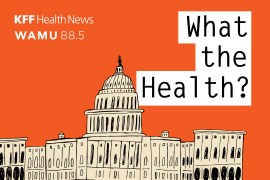California is now among the states trying to keep health-care costs down by setting spending caps — a task that pits public officials against a deeply entrenched and heavily lawyered set of players.
It’s uncertain whether the state can get insurers, hospitals and medical groups to collaborate on containing costs even as they jockey for their slice of California’s $400 billion-plus health-care pie.
The verdict could take years.
In late April, the state’s new Office of Health Care Affordability set a five-year target for spending growth that starts at 3.5 percent for 2025 and drops to 3 percent by 2029. The goal of the embryonic agency is to make care more affordable and accessible while improving health outcomes and reducing inequity.
To do so, California’s affordability office must confront high prices, unnecessary medical treatments, overuse of high-cost care like emergency rooms, and administrative waste. Not to mention state policies that favor greater investment in health care, which means more revenue for the industry.
This year, when the office was considering an annual per capita spending growth target of 3 percent, the California Hospital Association said the figure did not account for the state’s aging population, new investments in its Medicaid program and other cost pressures. Instead, the hospitals proposed a 5.3 percent average annual target over the five-year period.
The California Medical Association, which represents the state’s doctors, has expressed similar concerns.
For health-care organizations that miss the target, a long and messy process begins that could end with fines of as much as 100 percent of the overspending. But that probably wouldn’t happen until 2030 or beyond, if ever.
In 2013, Massachusetts was the first state to set annual spending targets. Connecticut, Delaware, Nevada, New Jersey, Oregon, Rhode Island and Washington are among other states that have set targets.
The results in Massachusetts have been mixed: The state beat its target in three of the first five years, falling below the average national spending increase.
But more recently, its health spending has increased. In 2022, it exceeded the target by nearly double, and the state’s Health Policy Commission, which oversees spending control efforts, warned of “many alarming trends.”
Proponents of California’s affordability agency hope that open dialogue — coupled with plans to make more detailed spending data public, including for specific health-care organizations — will foster greater industry accountability.
Rhode Island, despite a preexisting policy of limiting hospital price increases, exceeded its overall health-care spending growth target in 2019, the year it took effect. In 2020 and 2021, spending was largely skewed by the coronavirus pandemic. But in 2022, the spending increase came in at half the state’s target rate.
This article is not available for syndication due to republishing restrictions. If you have questions about the availability of this or other content for republication, please contact NewsWeb@kff.org.






